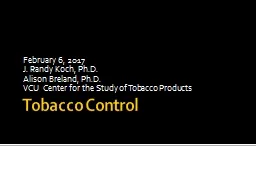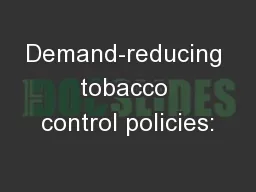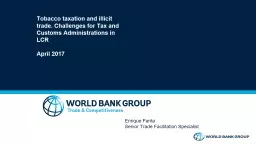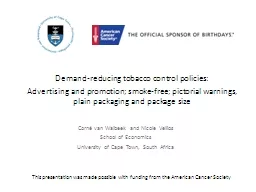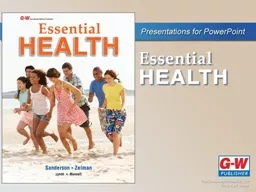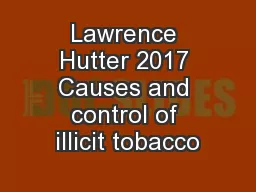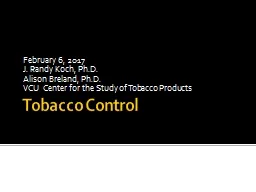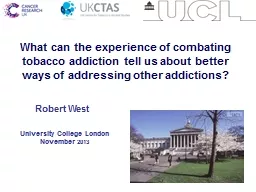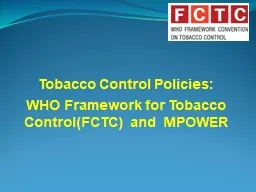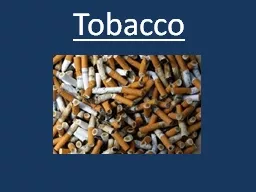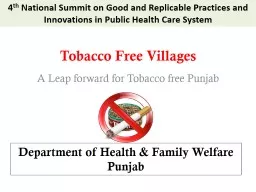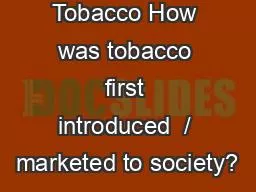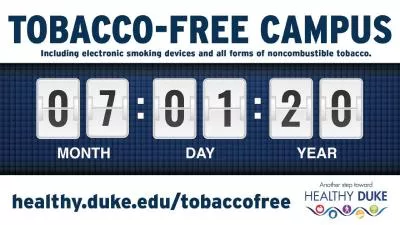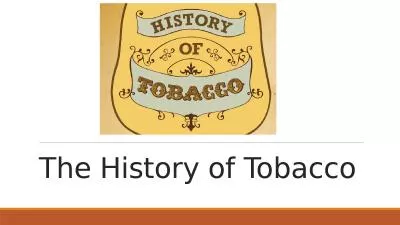PPT-Tobacco Control February
Author : tatiana-dople | Published Date : 2018-02-02
6 2017 J Randy Koch PhD Alison Breland PhD VCU Center for the Study of Tobacco Products Health Consequences In the US over 480000 people die from tobacco related
Presentation Embed Code
Download Presentation
Download Presentation The PPT/PDF document "Tobacco Control February" is the property of its rightful owner. Permission is granted to download and print the materials on this website for personal, non-commercial use only, and to display it on your personal computer provided you do not modify the materials and that you retain all copyright notices contained in the materials. By downloading content from our website, you accept the terms of this agreement.
Tobacco Control February: Transcript
Download Rules Of Document
"Tobacco Control February"The content belongs to its owner. You may download and print it for personal use, without modification, and keep all copyright notices. By downloading, you agree to these terms.
Related Documents

